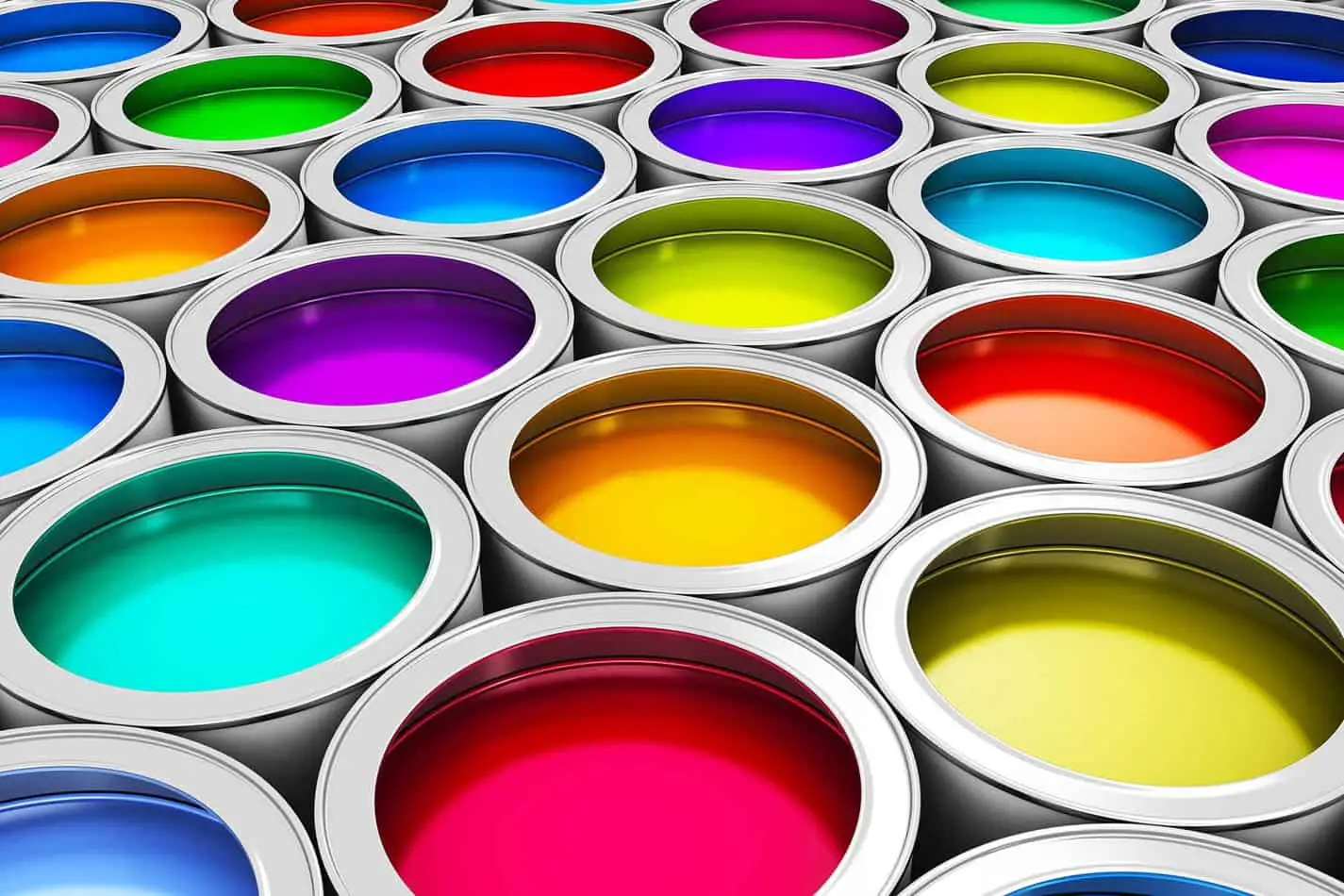Two of the more difficult paint types to distinguish from one another, and a source for lots of confusion, are latex paints and acrylic paints. Both are types of acrylic paint, both are considered water-based, and both are–simply put–a combination of a pigment and an acrylic binding substance. Though the substance is an acrylic mixture, these paints, in their wet form are water-soluble and considered water-based paints.
The reason for the confusion is simply the labeling conventions of paint manufacturers. You might have read that the difference between “latex” and “acrylic” is that latex is water-based and acrylic is “chemical” based. This is a meaningless statement; both paints are considered water-based and both contain “chemicals.” Those labeled “acrylic” paints, in general, are those that contain more acrylic polymers than those labeled “latex.”
There are also acrylic paints used by artists; however, in this article I am honing in on those used for house painting and construction projects. In this discipline, acrylic paints have nearly made oil paints obsolete, and now the competing paints are the two main types of acrylic paints, latex and acrylic, as I’ve outlined above.
It’s also worth noting that acrylic latex paints, a combination of both acrylic and latex, are also available.
The Pros and Cons of Working With Acrylic Paints
Acrylic paints are often more specialized and have a higher content of acrylic polymers. The polymers aid in the paints durability, flexibility, and adhesion qualities — which also raises their cost. To help you choose the right paint for your project, I’ll include some benefits and drawbacks to using acrylic paint.
Pros of using acrylic paint
- Resilience. Acrylic is a better choice for outdoor projects such as building exteriors and backyard furniture. Consider using it for interiors that get a lot of use, too, such as cabinets or trims. The flexibility and durability means it will withstand temperatures, wear and tear, and sunlight.
- Adhesion. Acrylic paint can be more specialized for adhesion to particular surfaces. Pay attention to the surface you are painting. If it is resistant to new coats, likely you can find an acrylic paint that will adhere.
Cons of using acrylic paint
- Cost. Although there is a range in prices, generally acrylic paints cost more than latex. Weigh your options by considering the characteristics that are absolutely vital to your particular project.
- Toxicity and fumes. The higher content of acrylic polymers means acrylic paint is slightly more toxic than latex. Keep this in mind when painting interiors or in enclosed spaces, and make sure you have the proper ventilation.
The Pros and Cons of Working With Latex Paint
Quick clarification: Latex does not come from the rubber plant, as the name suggests. As I already outlined above, it is simply an acrylic paint labeled “latex” to distinguish between the more basic acrylic mixture and the acrylic mixture with a higher polymer count (called “acrylic” paint).
Latex paints are the more common choice for most projects, and there are a few good reasons for this. Here are some of the pros and cons to give you an idea.
Pros of using latex paint
- Coverage. Latex paints provide excellent coverage, requiring fewer coats, and therefore they are frequently used for painting large surfaces such as interior walls–or in any situation where you need a lot of it. The exception to this is exteriors and areas that would benefit from more durability.
- Dries quickly. Latex tends to dry even quicker than acrylic paint, and certainly quicker than oil paint.
- Cost. Latex paint is cheaper than other paints, making it your most affordable option. Its reduced polymer count may comprise its performance for particular projects, but it also brings down the price.
Cons of use latex paint
- Not great for exteriors. Latex paint and acrylic paint are both water-based; however, the fewer acrylic polymers in latex paint makes it less durable outdoors, and a poor choice for painting wood — particularly untreated wood. If it’s not specialized for these surfaces like acrylic paint is, the water content is likely to cause problems with changing temperatures and on porous materials.
- Less flexible. Latex paint is less elastic and therefore should not be your first choice for cabinets, window and door trim, or surfaces with lots of repeated use.
When to Use Latex vs. Acrylic Paint
So, should you use latex or acrylic paint?
If you’ve ever painted the exterior of a house, you know it’s a huge time and energy consuming project and you want to do it as infrequently as possible. Even if you hire professionals, the cost of their labor makes it an endeavor you hope to have done seldom. Using the highest quality acrylic paints, even though they are more expensive, could help you stretch out the time between painting significantly — maybe even up to ten years. Ultimately you’ll be saving money!
I often come across cheap or free patio furniture at estate sales or on the curb — the catch is that they are usually pretty worn or need a paint touch up. Because the furniture is cheap or free, I don’t hesitate to spend a little more money on acrylic paint. Acrylic paint is always a better choice for outdoor projects, and in this case it’s still affordable.
Acrylic paints are also much better for painting wood.
Latex paint is hands down the best option for interior use, and I have always used it for painting the walls of my bedroom, kitchen, etcetera. It has fewer fumes, dries quickly — both characteristics are important for your living environment.
Distinguishing between latex and acrylic house and construction paints sounds confusing until you realize they are basically different ratios of the same mixture. I hope this article clears up some of that confusion and proves useful for determining which option is best for your particular project.

